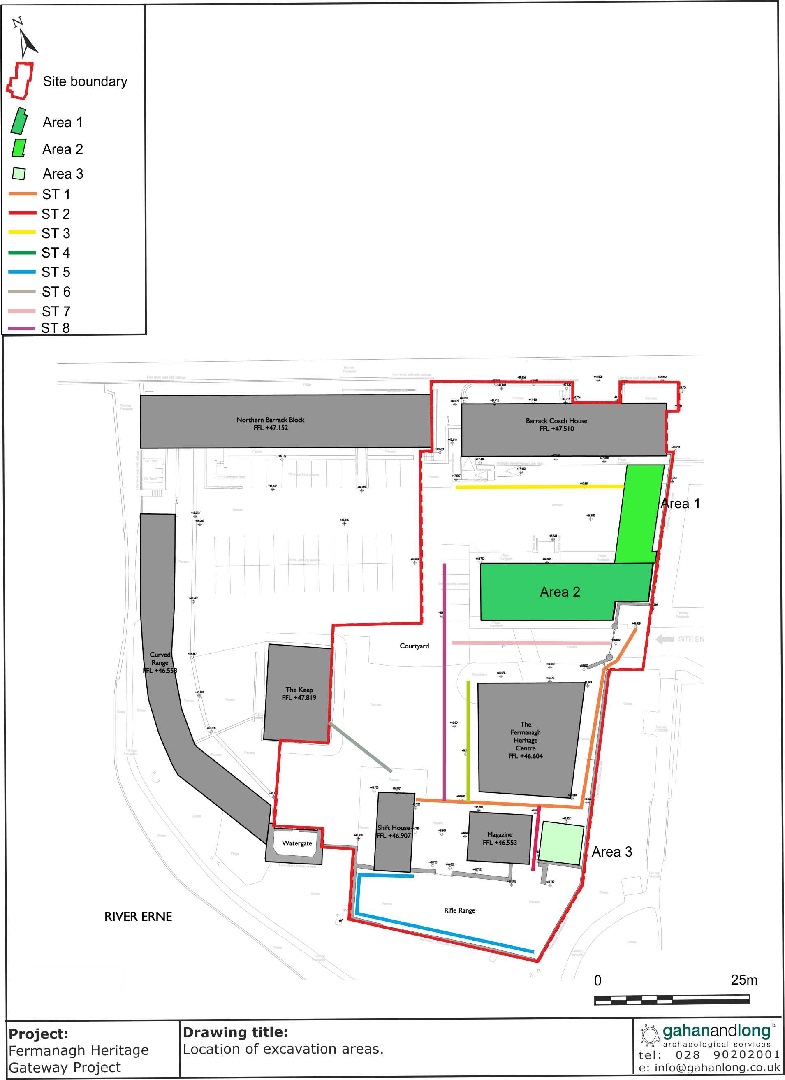2016:756 - ENNISKILLEN CASTLE, Fermanagh
County: Fermanagh
Site name: ENNISKILLEN CASTLE
Sites and Monuments Record No.: FER211:039
Licence number: AE/14/171E
Author: Norman Crothers, Gahan & Long Ltd
Author/Organisation Address: 7-9 Castlereagh Street, Belfast BT5 4NE
Site type: Building
Period/Dating: Modern (AD 1750-AD 2000)
ITM: E 623118m, N 844220m
Latitude, Longitude (decimal degrees): 54.346143, -7.644434
An archaeological evaluation was carried out ahead of proposed redevelopment works commissioned by Fermanagh District Council of several buildings within the grounds of Enniskillen Castle in a scheme known as the Fermanagh Gateway Project.
Testing was undertaken between 6 and 24 October 2014, the excavation carried out from 3–23 December 2014 and 5–16 January 2015 and monitoring of service trenches between 16 July 2015 and 24 February 2016.
The initial testing consisted of a series of 5 hand-cut test pits, two outside and one within the WHSSB building to identify whether any elements of the stables and latterly married officers’ quarters and caretaker’s cottage survive sub-surface, and two outside the 1881 building. These test pits confirmed the survival of evidence for earlier structures in the area of the proposed link building and were preserved in situ.
The second phase of the evaluation consisted of the excavation of the car park area and the footprint of the former WHSSB building after its demolition. Upon removal of the modern car park surface and the rubble in-fill the surviving archaeological remains were uncovered as the north and west wall of the armoury building, remnants of internal and external cobbled surfaces and and walls forming the division between the armourer’s workshop and the ‘browning room’ shown on a plan of 1922. The former WHSSB building was demolished by mechanical excavator to the level of the concrete beams forming the ground floor. The concrete beams were removed and the underlying modern infill was removed to the surface of undisturbed archaeological strata. Remains of internal walls and hearths of the married quarters building and cobbled surface were excavated.
The third phase of the evaluation consisted of the monitoring of the service trenches. The majority of finds consisted of rubble from the various phases of construction and demolition of the armoury building, its conversion to a toilet block and the construction and demolition of the 1960s link building. Fragments of wall plaster, wall tiles, floor tiles, bricks, water pipes, sewer pipes and even electric wiring were recovered. Sherds of 19th-century pottery, clay pipe stems and one bowl, iron nails, iron brackets, hooks, wedges and a door lock were also recovered.

